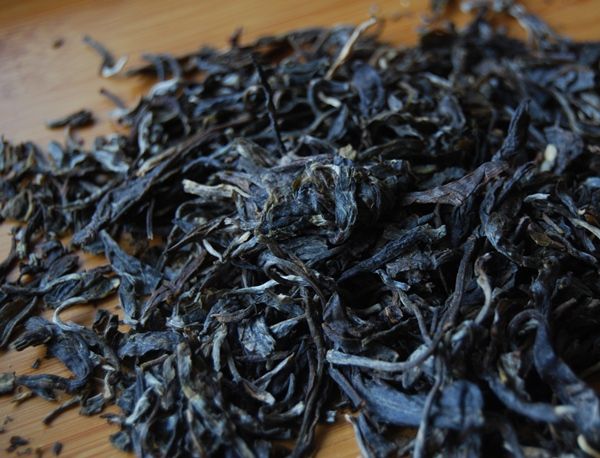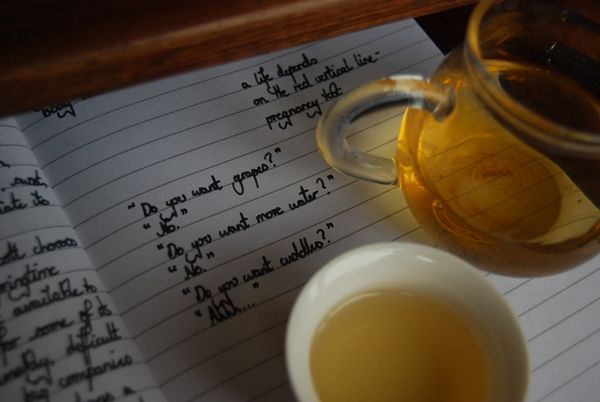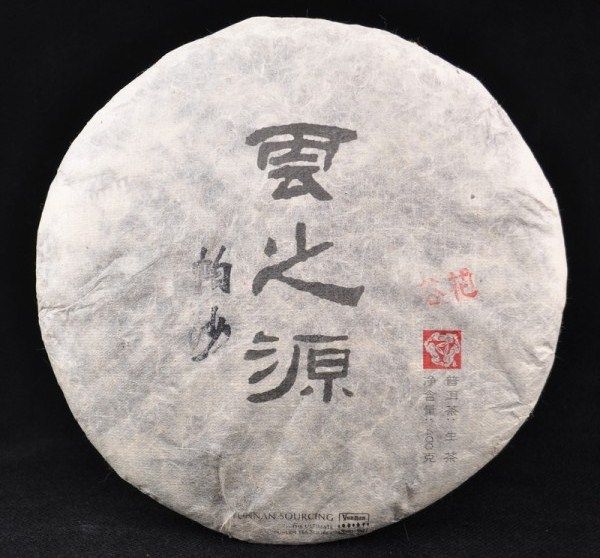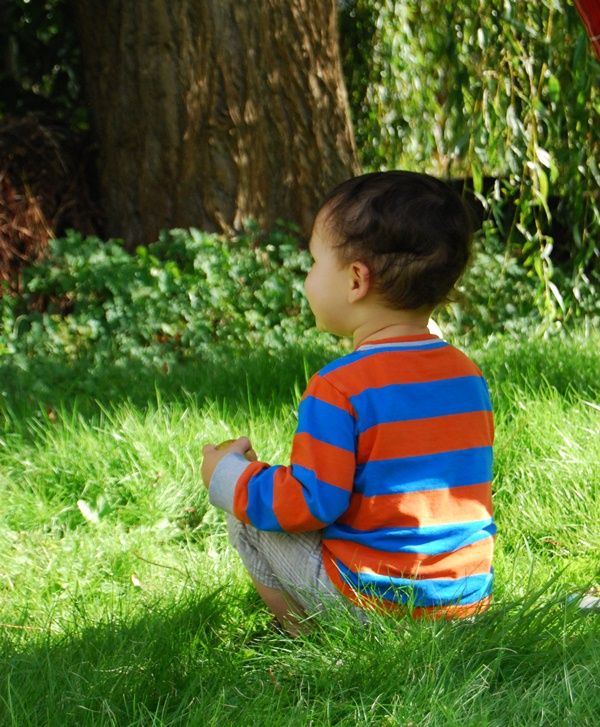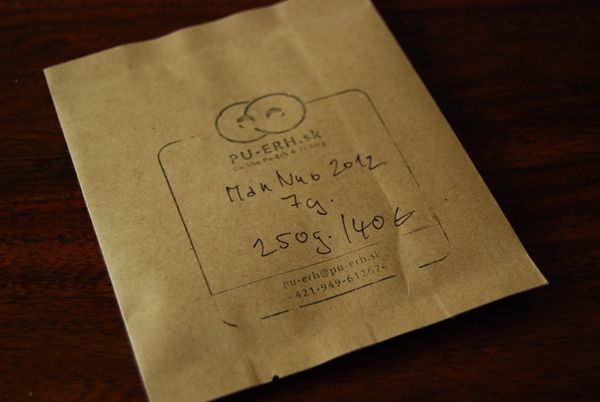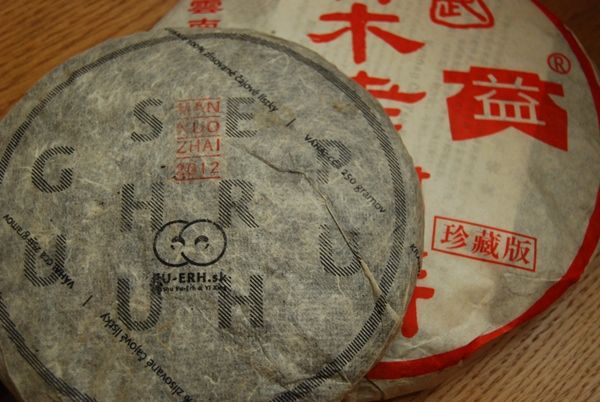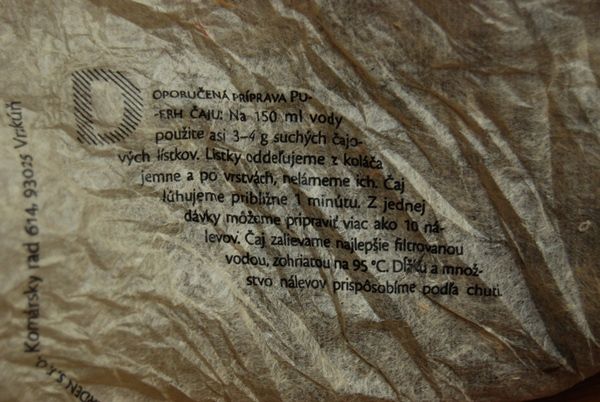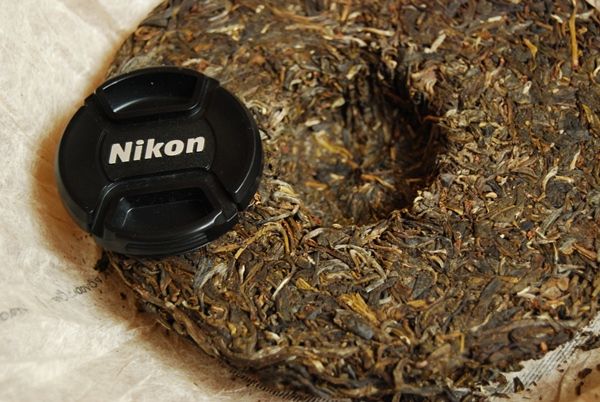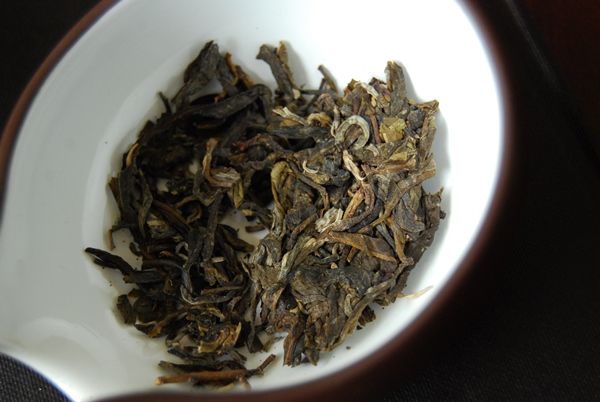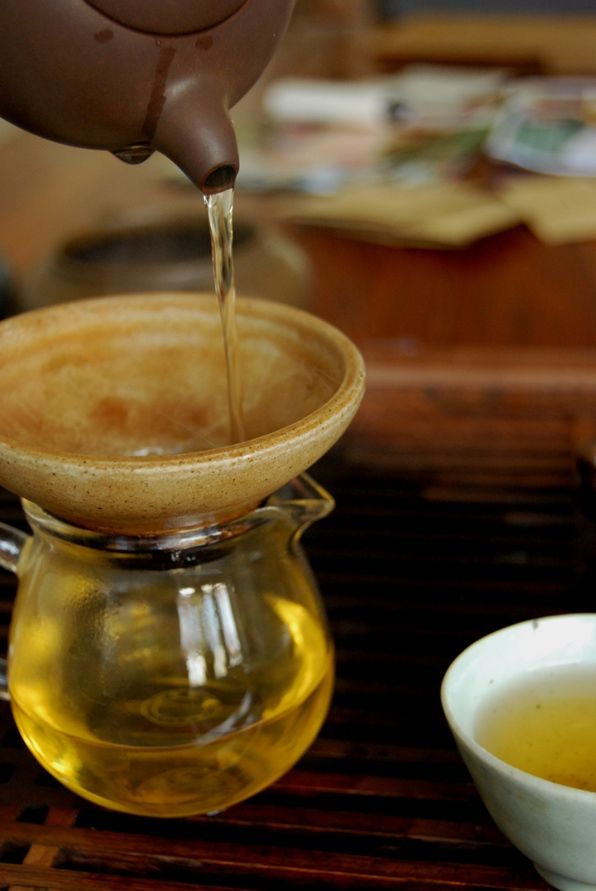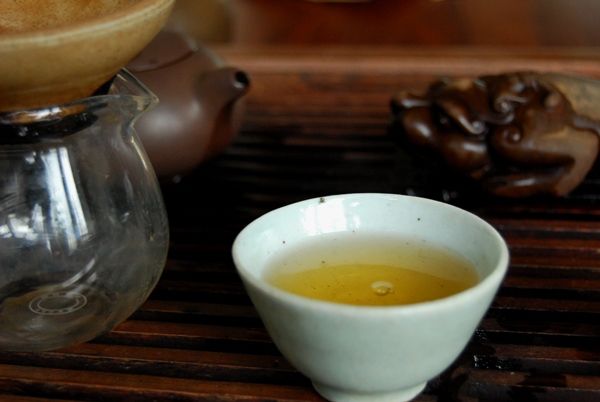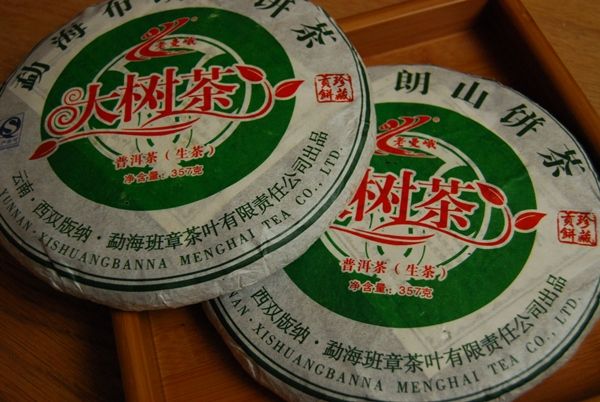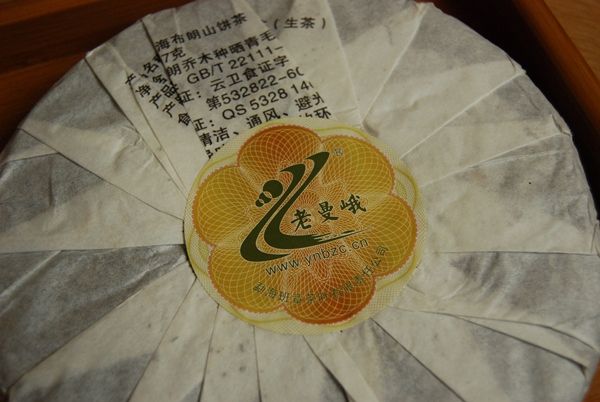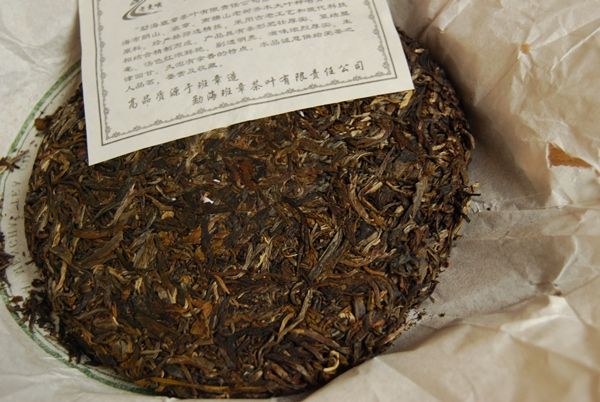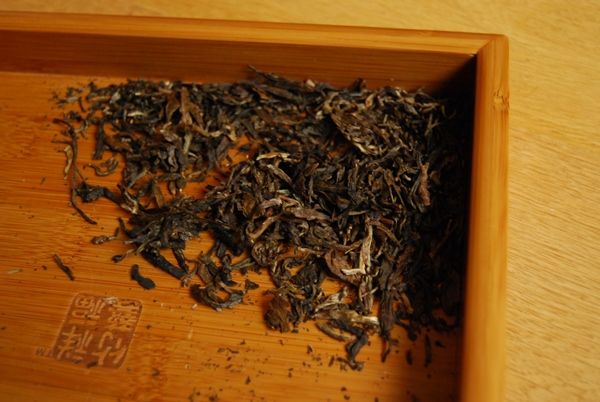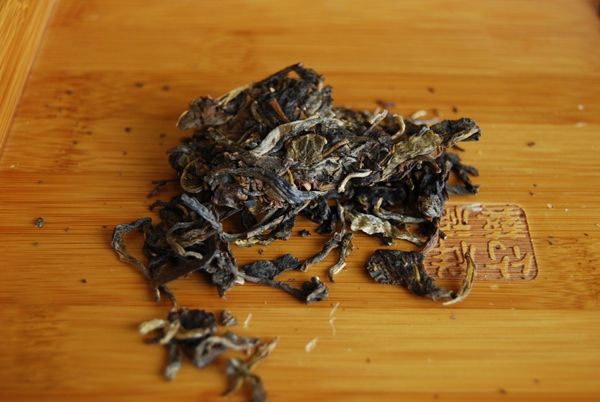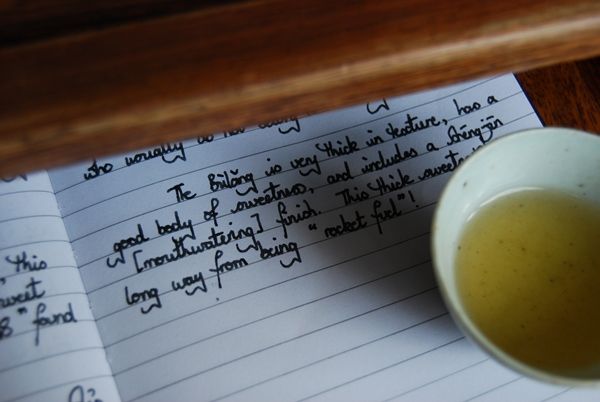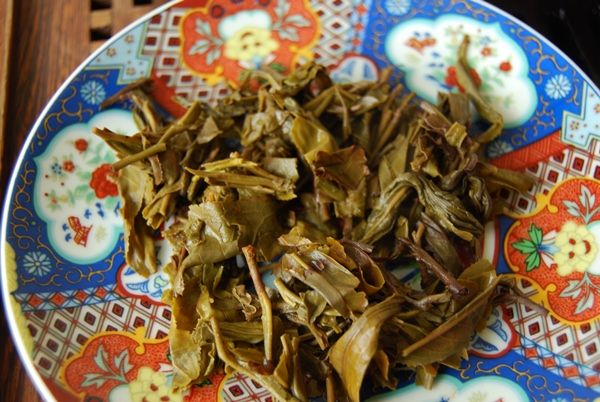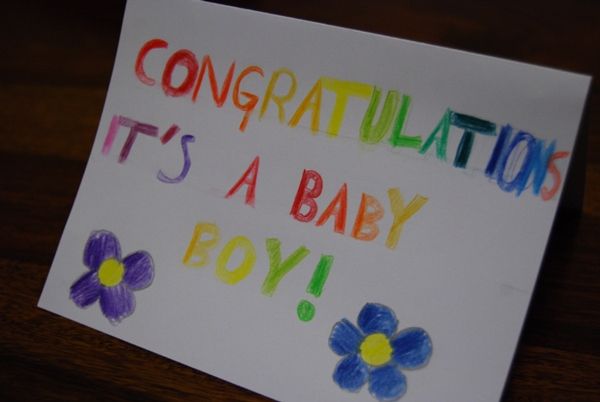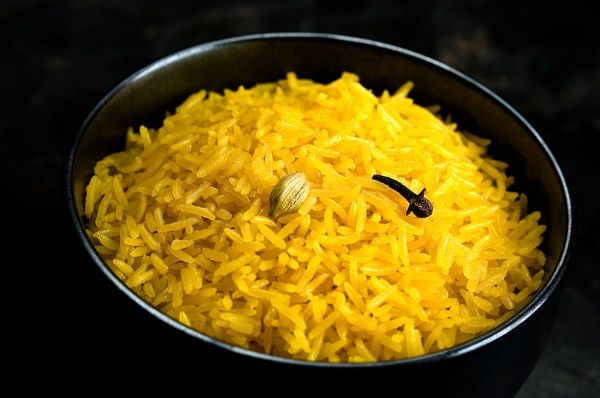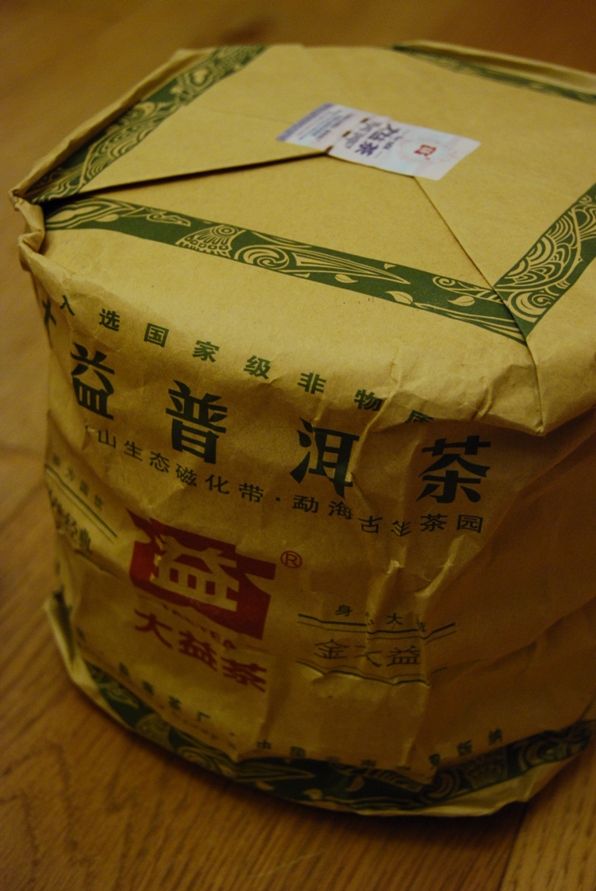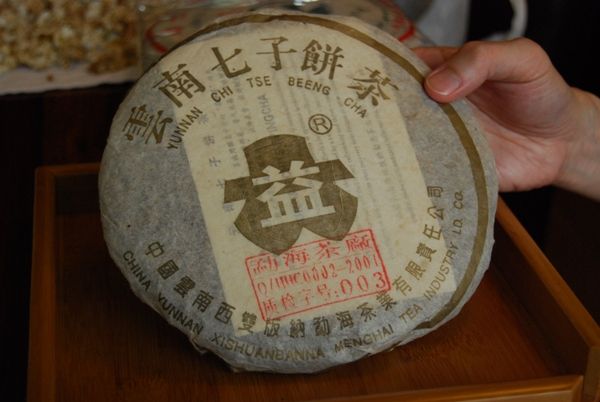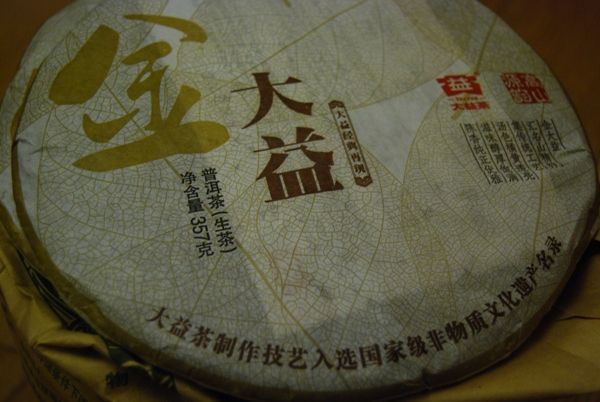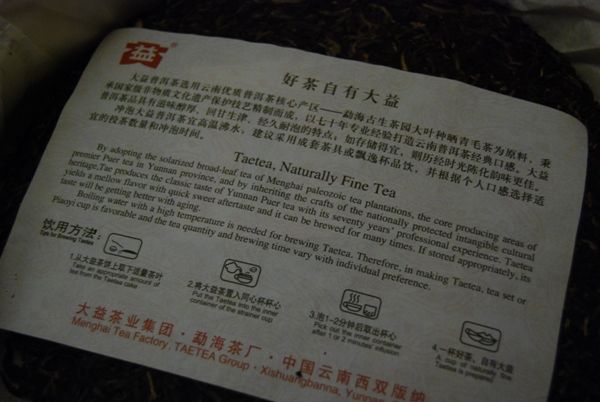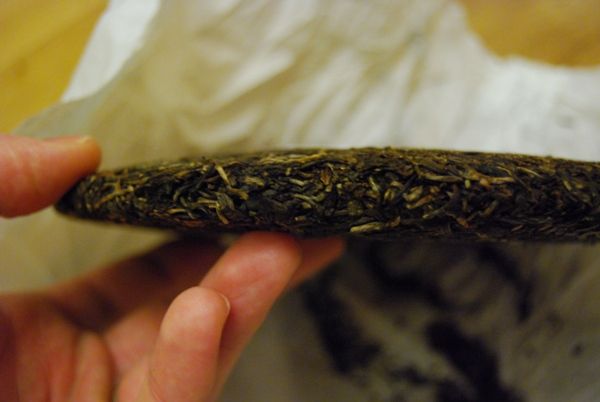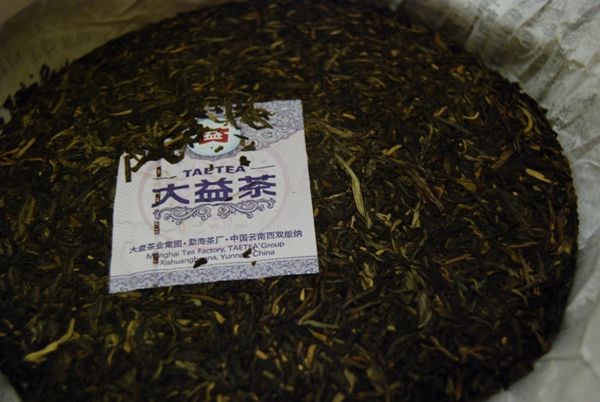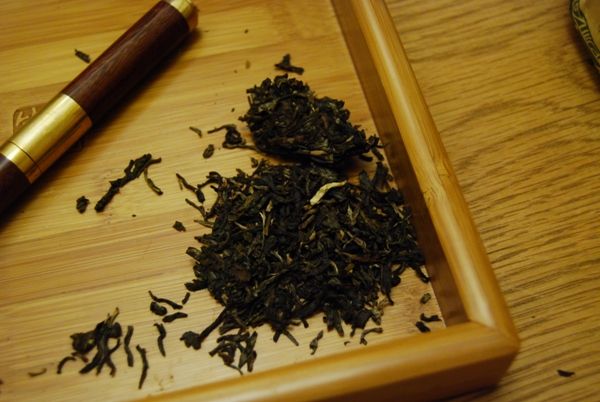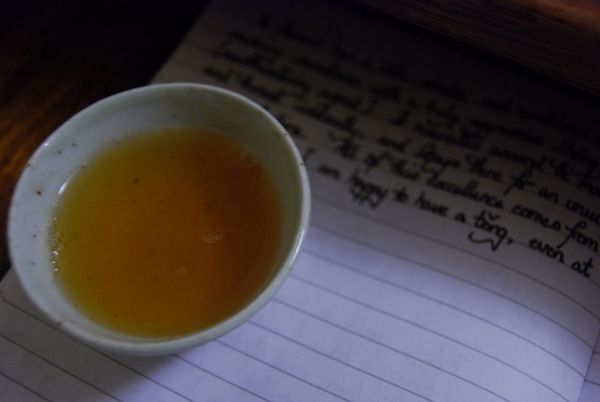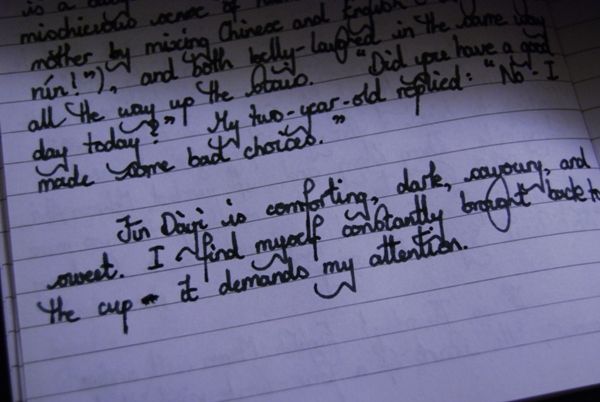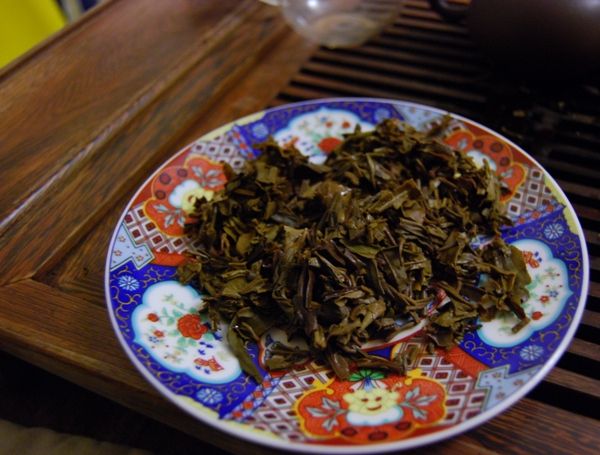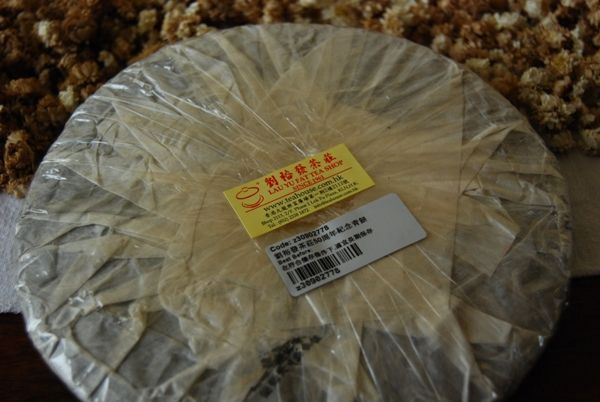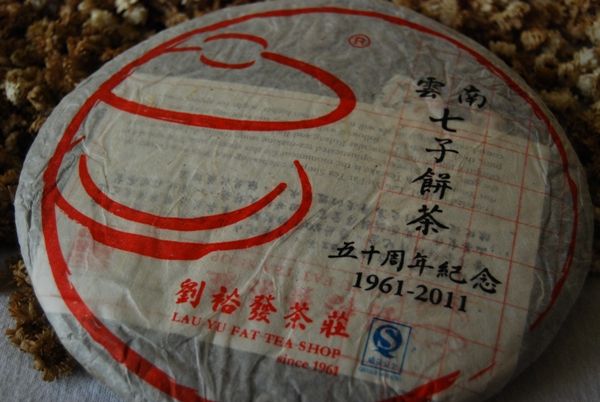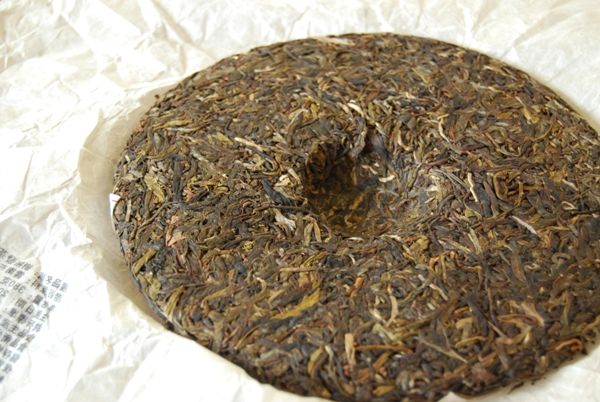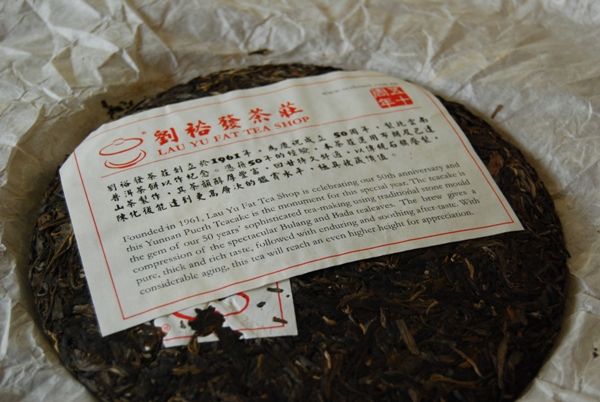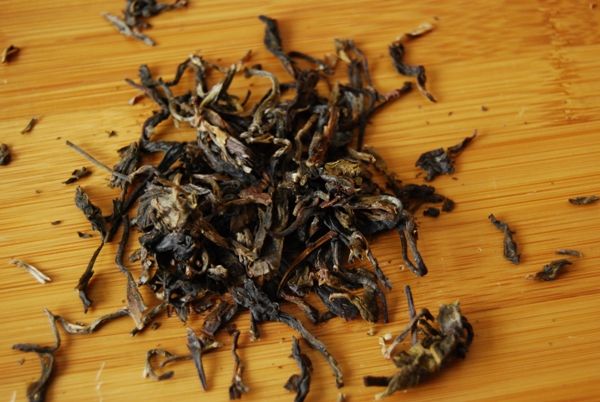How fat?
LAUYUFAT.
Or "Liuyufa" Teashop, if you're into Mandarin. To be fair, this is a Hong Kong shop (of some reknown) and so it would be best to stick with the Lauyufat.
Apache and I share a love of "old fashioned" pu'ercha, referring to that humble genre of cakes that has typically formed the majority of what we consider to be "aged". The venerable teagangster himself introduced this cake to me after
a previous session, and we subsequently made a joint purchase from The Fat. It took ages to arrive, but all good things come to those who wait. In pu'ercha, you need patience. International shipping ain't no problem.
The Fat celebrated its fiftieth anniversary with this cake, which is a blend of Bulangshan and Badashan leaves, and which sounds rather good to my ears.
I drank some of this cake after encountering a lesser 2012 cake on the same day and was subsequently impressed by this cake's thickness and fullness, both in aroma and in the cup. The Fat has been in the business of selling pu'ercha for a long time and, while that doesn't necessarily equate to making great cakes, this one certainly is decent.
Apache and I have a hedging strategy, you see. It basically comes down to the fact that the great cakes of ages past were of a certain genre, and that the modern tendency towards hyper-expensive, single-mountain cakes may be diverging from that genre. This may or may not be a good thing, but it is wise to drink widely, as is true for most things in this little existence.
I have plenty of overpriced young tea in my collection, as I'm sure many of us may, but there is life outside the genre of single-mountain leaves, hand-picked by trained eunuchs, leaves subsequently dried within the warm confines of a buxom wench's ample bosom. Despite what the commercial web-sites will tell you.
Like many of us, I'm a big fan of ample bosom - the modern genre of tea is a pleasure to drink at this young stage, after all. The question is more one of extrapolation into future decades, and it is in this aspect that the uncertainty begins to creep in.
The best we can do is to drink widely, acquire data-points, and watch the evolution of our own experiments. I've been buying tea in quantity for no more than seven years, which is a very short interval given the lengths of time that the Great Cakes have been around. The best that we can do is to determine which cakes in our collections are coming on well. We have data allowing limited comparisons:
(i) For those cakes bought when new, how are they now that they are, for example, six years old?
(ii) For those cakes bought at, let's say, six years of age, how are they now that they are twelve?
And so on.
Usefully, we may compare those cakes that have gone from 0 years to 6 six years with those that have gone from 6 years to 12 years. We may have some 12-year cakes which are doing very well, and of which we may recall their state at 6 years of age. Do we have any younger, modern cakes that have grown into that state, now that they themselves have attained an age of 6 years?
For my collection, the best agers have been humble: the "old fashioned" recipes have made great strides in six years towards the state in which my most decent 12-year cakes started out. The "hand-made" cakes have a greater failure rate.
It is, naturally, an inexact science, with the definition of "young cakes" changing, as more and more merchants pile onto the "visit Yunnan, buy maocha, make cakes" bandwagon. Presumably, over this time, such merchants have been improving in their skills, their ability to pick and process good leaves, etc. It could be that the merchant-made 2012 cakes are all amazing in 50 years, compared with the 2008 cakes.
Therefore, Apache's and my strategy is really one of hedging: we are heavily invested in modern single-mountain cakes, but also heavily invested in "chenxiang" [old fragrance] cakes, just to be safe. I find myself leaning ever more towards the latter category, it must be said, and I am slowing up considerably in my acquisition of merchant-made, ample-bosom cakes. The last that I bought in any quantity from Western merchants was in 2010, I think, and I have been drinking samples since - with mixed feelings for the success of the merchants' more recent products (across a range of some half-dozen merchants). This is just my own folly, but I share it for the purposes of comparison.
As prices begin to spiral, and merchants products begin to disappear into the stratosphere, some of us are left thinking: "You know, these old-recipe cakes are aging really nicely, and I can get an entire tong for the price of a single ample-bosom cake. Plus, they taste great. And there's no risk."
--
Hmm. It seems that I have whizzed through this article without actually referring to the nominal subject of the article, the 50-year cake by The Fat. That's fine.
The cake by The Fat, like all good "old school" recipes, offers little in the way of surprises, but much in the way of satisfaction. It tastes like every old, good cake that you ever came across - just young.
And that's exactly what I'm after at this stage.
Addendum
January, 2015
Four years later, this is a good tea: sweet, husky, fruity - almost part of the Menghai oeuvre - with plenty of strength. It endures many infusions without degradation, and seems to be aging in a stable manner.

